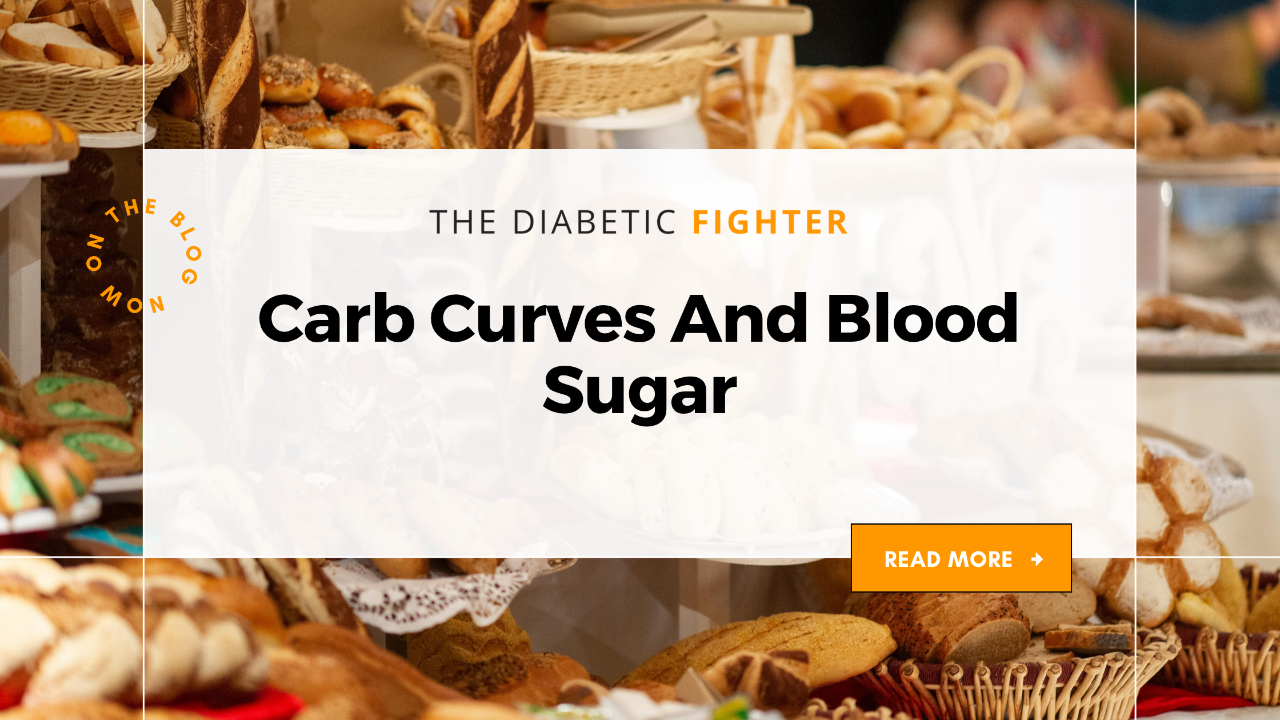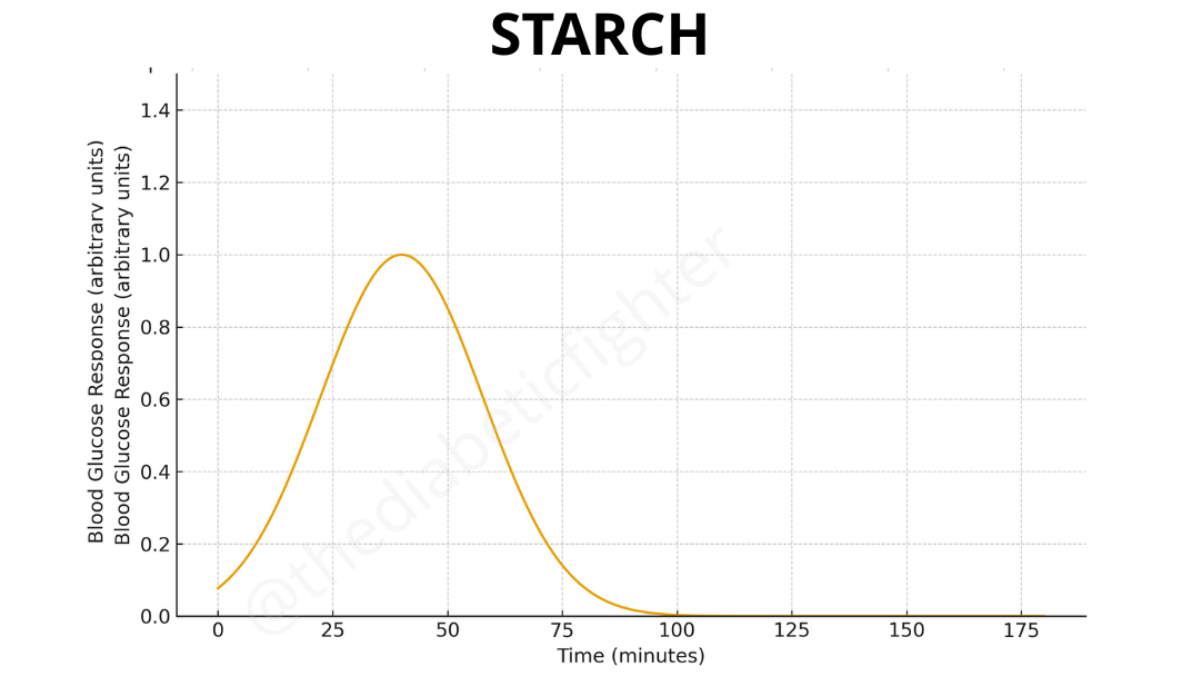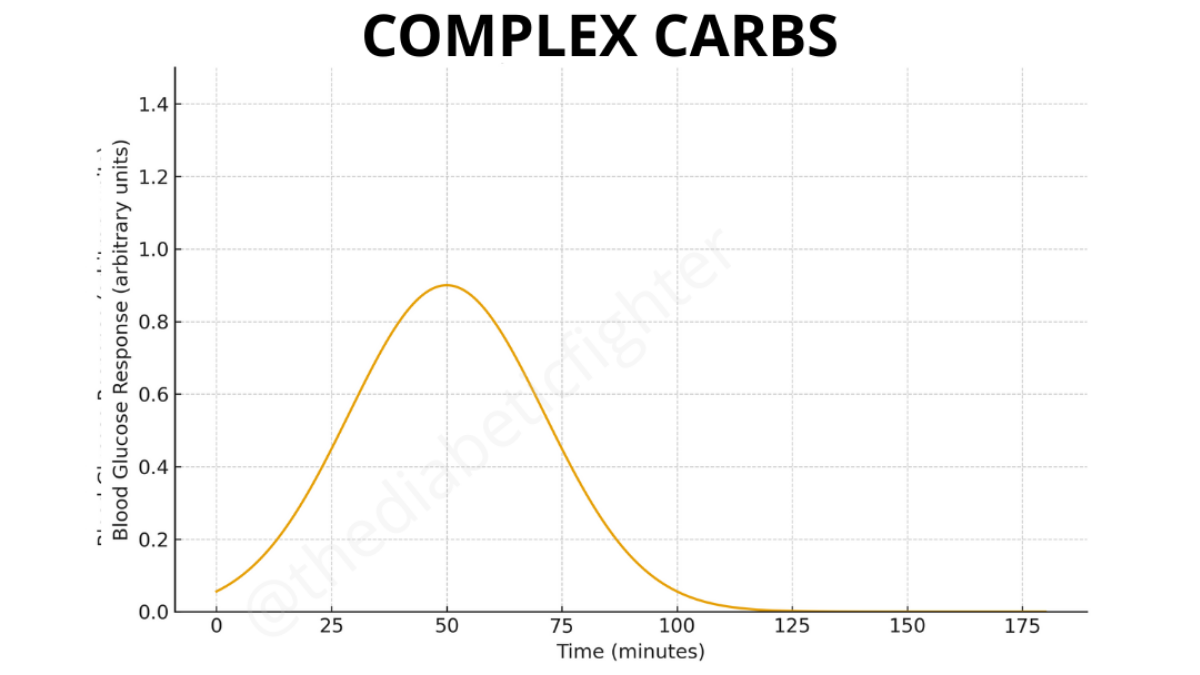Carb Curves and Blood Sugar: How Different Foods Change Your Glucose Response

Not all carbs hit your blood sugar the same way. And not all spikes are created equal.
Some foods raise your glucose fast, some raise it slowly, and others barely move it at all. These patterns are known as carb curves, and they explain why certain meals send you soaring while others feel steady and predictable.
Understanding these curves can dramatically improve your control if you live with Type 1 diabetes, Type 2 diabetes, prediabetes, or even if you have no diagnosis and simply want better energy, fewer crashes, and more balanced hunger.
Let’s break down each curve in a simple and clear way.
Sugar: The Sharpest and Fastest Rise
Sugar creates the strongest and quickest response of any carb source.
What happens in your body:
-
Absorbs almost immediately
-
Produces the highest peak
-
Drops off quickly
For Type 1 diabetics:
You will need a rapid and well-timed bolus if sugar is part of your meal.
For Type 2 diabetics:
Sugar can overwhelm insulin resistance and cause large, fast spikes that are hard to bring down.
For non-diabetics:
Your body will release a strong insulin response, often followed by an energy crash.

Simple Carbs: Fast Spike
Simple carbs digest quickly and raise blood sugar fast, followed by a quick fall.
Examples:
Juice, fruit, candy, white bread, cereal
What happens in your body:
-
Rapid digestion
-
Sharp rise and quick crash
-
Minimal staying power
For Type 1:
Great for treating lows, not ideal for stable meals.
For Type 2:
These can spike you quickly because insulin resistance slows your ability to clear glucose.
For non-diabetics:
Simple carbs often cause a short burst of energy followed by hunger and fatigue.

Starches: Moderate and Predictable Rise
Starches sit between simple and complex carbs. They digest at a medium speed and produce a moderate curve.
Examples:
Potatoes, rice, pasta
What happens in your body:
-
Not as fast as sugar
-
Not as slow as high fiber carbs
-
Creates a predictable rise
For Type 1:
Starches often respond well to pre-bolus timing.
For Type 2:
Many people see a noticeable rise but with more predictability than sugar or simple carbs.
For non-diabetics:
Starches provide steady energy but can still lead to overeating if portion sizes are large.

Complex Carbs: Slower and Smoother Rise
Complex carbs contain fiber, which slows digestion and keeps glucose steadier for longer.
Examples:
Oats, quinoa, lentils
What happens in your body:
-
Slower digestion
-
Smaller peak
-
Longer-lasting energy
For Type 1:
These carbs often give you a smoother rise and more stable post-meal numbers.
For Type 2:
The added fiber helps prevent large spikes and improves fullness and blood sugar stability.
For non-diabetics:
Complex carbs support balanced energy, better digestion, and more stable appetite.

Protein: Minimal Blood Sugar Impact
Protein barely raises blood sugar unless eaten in very large amounts.
What happens in your body:
-
Very slow digestion
-
Very small rise
-
Delayed effect only with high amounts
For Type 1:
Protein helps stabilize meals and reduce sharp spikes.
For Type 2:
Protein increases satiety and can improve insulin sensitivity over time.
For non-diabetics:
Protein creates stable energy and supports muscle, metabolism, and appetite control.

Fat: Almost No Immediate Rise
Fat alone does not spike blood sugar. It does, however, affect the timing of your curve.
What happens in your body:
-
Slows digestion
-
Blunts carb spikes
-
Can cause delayed rise two to three hours later
For Type 1:
Meals high in fat often require extended bolusing or combo boluses due to delayed digestion.
For Type 2:
Fat helps slow carb absorption but can also increase overall calorie intake if portions are large.
For non-diabetics:
Fat contributes to fullness and slows glucose release for stable energy.

Why This Matters for Everyone
The type of food you eat changes the pattern of your blood sugar response.
When you understand these curves, you can:
-
Bolus more effectively (Type 1)
-
Reduce glucose spikes and improve insulin resistance (Type 2)
-
Avoid crashes and improve energy throughout the day (non-diabetic)
-
Build meals that keep you full and satisfied
-
Pair foods in ways that create smoother glucose responses
Whether you are managing diabetes or simply optimizing your metabolism, this knowledge gives you more control and consistency in your day.
Chat soon,
Shawn
Are You Ready To Lower Blood Sugar, Lose Weight, and Live Better?
Book a free consultation and let's chat about your current frustrations, goals, and assess your immediate needs.

